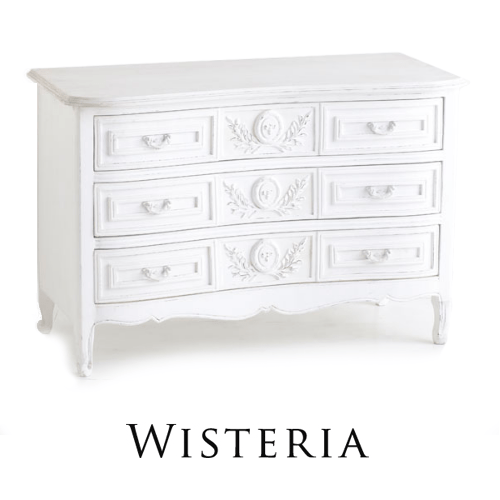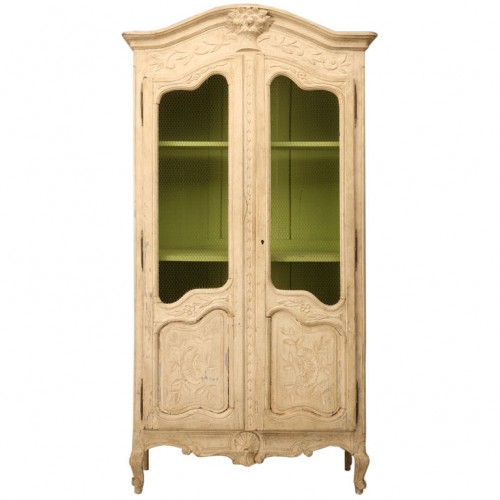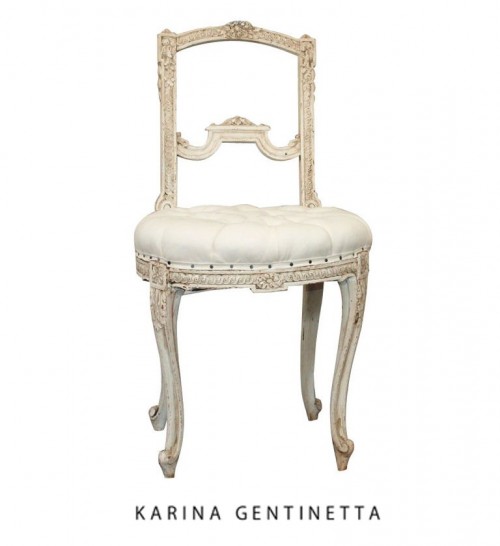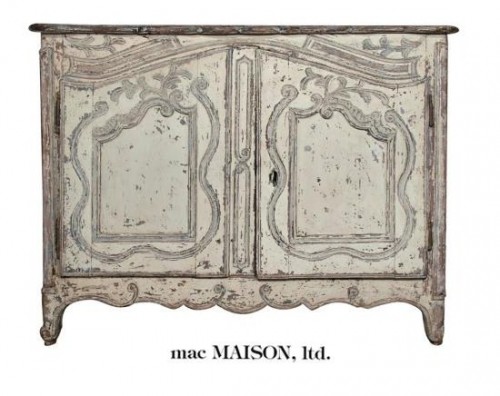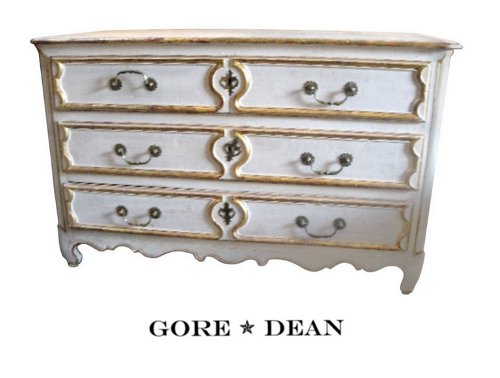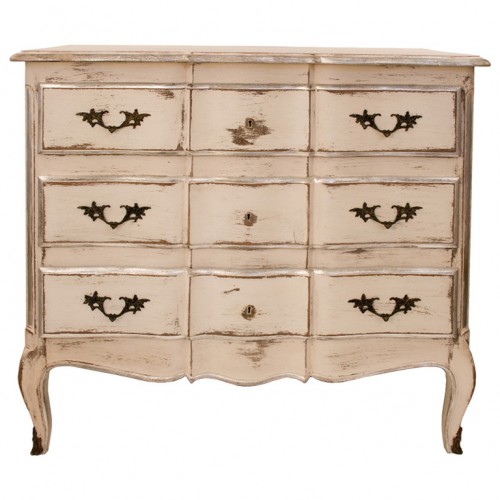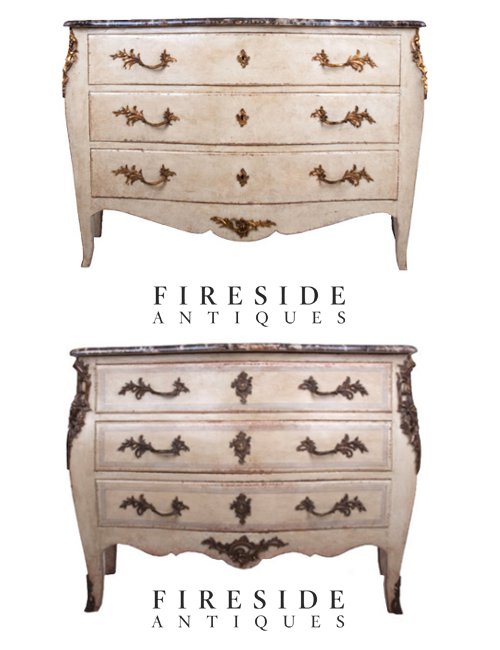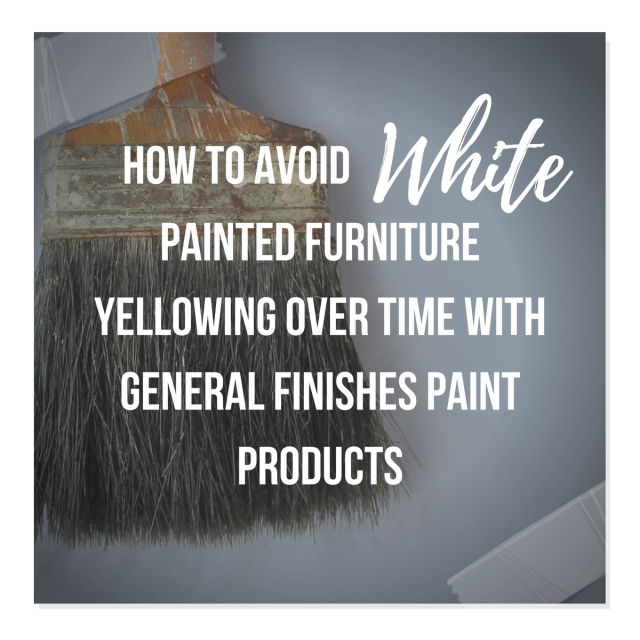
A TUTORIAL ON WATER BASED TOP COATS YELLOWING OVER BRIGHT WHITE PAINT
Many you may have noticed that the labels on our bright white paints, Snow White Milk Paint and Chalk White Chalk Style Paint now carry a warning label regarding the yellowing of topcoats. All bright white paint will yellow slightly with time, with or without topcoat. Water-based topcoat is reactive and more likely to draw out substances in the wood such as tannins or unknown substances in existing finishes causing the topcoat to yellow. This is an industry-wide issue. Don’t carry the cost of white paint yourself– pass the cost on to the consumer who wants it with a fair upcharge. White paints, even if they did not yellow, require more coats to achieve coverage.
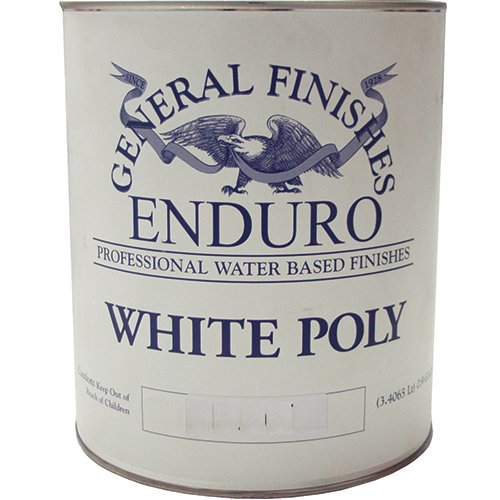 General Finishes background was originally on the professional side, and the incidences of yellowing topcoat over white paint were almost nil, and when our sprayable professional finish, Enduro White Poly, is used, there have been no incidences. But as the use of our paints has increased in the up-cycling and furniture refresh markets, we have heard more reports of our topcoat yellowing. Our response was to teach about prepping, testing you finish schedule and finally creating Stain Blocker, our stain blocking primer, but this is not enough. Just as we advocate prepping all finishes, we are now advocating NOT using a clear water base topcoat over BRIGHT WHITE paint.
General Finishes background was originally on the professional side, and the incidences of yellowing topcoat over white paint were almost nil, and when our sprayable professional finish, Enduro White Poly, is used, there have been no incidences. But as the use of our paints has increased in the up-cycling and furniture refresh markets, we have heard more reports of our topcoat yellowing. Our response was to teach about prepping, testing you finish schedule and finally creating Stain Blocker, our stain blocking primer, but this is not enough. Just as we advocate prepping all finishes, we are now advocating NOT using a clear water base topcoat over BRIGHT WHITE paint.
General Finishes is in the process of developing a brushable version of our professional Enduro White Poly (available only in gallons), but that will take some time and rigorous testing before we can release the product. Here is what you should know to protect yourself and also some immediate suggestions to decrease chances of yellowing.
There is no way to reliably predict yellowing ahead of time. Sometimes yellowing occurs, sometimes it does not. Every existing finish is different and we rarely know the finishing provenance on an existing piece. Every tree is different and every piece of wood is unique. Wood can bleed tannins immediately after the topcoat dries or months later with a change in temperature that comes with a change in seasons. Oak, pine, mahogany, and Douglass Fur are particularly prone to bleed-through.
As is true of most “water-white” topcoats, our High Performance Water-Based topcoat is a clear drying finish over a non-reactive substrate such as plastic. When paint is used over something as unpredictable as wood, all bets are off. Yellowing can be caused by the top coat activating the tannins in raw wood or aniline dyes, stains or contaminants in a pre-existing finish. This is most evident when using BRIGHT WHITE paint and most prevalent in the sculpted details of furniture, where the topcoat can collect, intensifying the color change to an unacceptable level.
To add to this issue, all bright white paint will yellow slightly with time, with or without topcoat. You have probably tried to touch up white woodwork in your home after several and noticed that the new paint is brighter.
Summary:
• Whites have a lower “hide” quality and are more transparent than most other colors. Most bright whites require additional coats to achieve the desired color and minimize color variation. This can increase cost of paint finishing. Always include a clause in your contracts addressing the need for additional coats to achieve coverage.
• Bright white paints can yellow over time with or without topcoat.
• The underlying finish or wood species can affect the final color of light paint.
• Details and inside corners are difficult to cover with any paint color, but this property tends to be more noticeable with whites. This is a naturally occurring phenomenon in paint application and does not necessarily constitute a defect in the paint finish or your technique.
TIPS FOR PROTECTING YOURSELF AND PREVENTING YELLOWING
1. Use a disclaimer in your contracts or recommend a softer white such as Antique White or Linen. Upcharge for the extra coats needed and ever guarantee a white finish over a piece that you cannot trace the provenance on. Here is a suggestion: Terms of Agreement and Warranties: ________ (Initials) I have been informed that more coats are required when painting with bright whites, reds, greens or yellow. I understand that white paint can yellow over time and that water based topcoats can occasionally react with the substrate or existing finish under white paints causing yellowing, even is a stain blocking primer is used.
2. If it is a low use project, use a premium white paint that is self-sealing and does not require a topcoat. A clear top coat is not required on our Milk Paint for increased durability, as it is a self-sealing, exterior rated coating with very high durability and performance properties. However, top coats provide a smoother surface that is easier to clean and boost durability for high use projects such as table tops and kitchen cabinets.
3. Get a spray gun and use a professional “white coat” such as our Enduro White Poly. It is a white paint with “increased topcoat properties”, is a stand-alone finish when 3 coats are applied and does not require sealing with a topcoat.
4. If you are still brushing, try adding 10-15% of the paint you are using to the first or second application of topcoat. The last layer of topcoat should not have paint in it, to maintain durability. We have had good reports of this technique from customers but have not tested in the lab over a long period of time.
5. Always test your project’s entire finishing schedule (from cleaning to topcoat) on an inside door or a more hidden area of the piece. This does not help if the yellowing occurs later but you will at least know if there is an immediate problem.
6. Always apply a stain blocking primer under white or light-colored paint such GF Stain Blocker or a shellac based primer. Always let any primer dry overnight. Some of the primers we have seen suggest a 3 hour dry time and that is not enough.
7. If you are working on period pieces such as a 1940’s serpentine mahogany desk which were often finished in stain containing aniline dyes that cast a pinkish bleed through under light paint, stay away from light colors. Not every piece of furniture is suitable for up-cycling with a light paint color. Pine, Mahogany, and furniture of the 1940’s and 50’s are a red flag.
8. Last, not all manufacturer’s topcoats are compatible with other finishes and may react with a color change. Always follow best practices by not rushing, and testing to your satisfaction first.
Hope this helps and wish us luck on our next paint endeavor- Chris
White Painted French Furniture
Wisteria now sells a stunning French chest painted white and beautifully designed to resemble the styles found in 18th-century France. The chest has vertually no distressing, giving it a very fresh look for your home. The ornate medallion carving and trim are all done by hand, as well as the paint and distressing applications. This chest features mango wood construction which will last for generations. Wisteria has this chest priced at $1,099.00
How To Get This Look For Your Home:
1. Start With The Right Styled Furniture- You cannot get the French look in your house without French furnishings. Shop online at websites like ebay, amazon,1st dibs and look for specialty retailers such as Wisteria and Restoration Hardware. Look in your local classifieds such as craigslist. Vintage French furniture is very common, and has the right bones, and often times just needs a bit of lipstick. Buy vintage furniture and upgrade and trade out some of your lower quality pieces with genuine antiques as you go along.
2. Painted Hardware -Wisteria has painted the hardware on this chest. The look is fresh and new. Often times finding the right hardware can be a battle on it’s own. Consider keeping an eye on ebay for French hardware. Esty has become another place to look for inexpensive French hardware. Hold out for getting the just right match for a special piece. Shiny brass is common, as well as a bronze for rustic Provincial furniture. In the past I have cheated and bought an oil rubbed bronze metallic paint which transformed my furniture quite nicely. If you do decide to take this route, consider priming your hardware with an automotive primer first. I have found this primer sticks to metal the best.
3. Pick The Right White. I just finished a summer of re-painting some of my older furniture in our home white. Picking the right white can really make your pieces look expensive than the rustic old cabbage and roses white that was popular in the 80’s.
Choose a color that is has a sight gray hue to it. Pick color families from beige, blue and green. The colors will have just a slight hue and makes a difference than a basic primer white. Brighter whites and glossy finishes work really well on modern Hollywood regency furniture and empire furnishings, but not so much on rustic countryside looks. White is very rich, the hue just has to be right for Provence styled furniture. When white furniture is put into a white room, the furniture itself should look richer than the wall color. A gray hue will give you the just right pop of white in any setting.
French Armoire From Old Plank
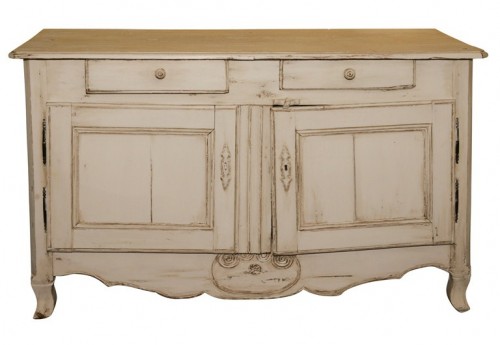 Louis XV Style Painted Sideboard Seller Berkshire Home& Antiques
Louis XV Style Painted Sideboard Seller Berkshire Home& Antiques
Tufted French Louis XV Painted Parlor Chair- Charming Louis XV french parlor chair, painted in a belgian white with beautiful aged patina and exquisite rose and ribbon carvings. Newly upholstered in an organic muslin with tufted seat.
French Provincial Painted Buffet- Handcarved painted buffet in tones of blues and grays. Rectangular top with molded edge and rounded corners. A pair of paneled doors with trailing foliate scroll over a shaped apron. One full inside shelf and one narrow shelf
French Painted and Parcel Gilt Commode- A french painted and parcel gilt commode featuring two upper drawers and two full width middle and bottom drawer. Brass pulls and hardware.
French Antique Louis XV Hand Painted Chest Seller Jean Marc Fray
French 19th Century Painted Bombe Commode,
French 19th Century Painted Bombe Commode – his French Bombe commode has a wonderful shaped faux marble top, very abstract with wonderful coloring and patina. Solid brass pierced ormolu are on all corners, splayed feet, drawer pulls and escutcheon plates and plinth. This exceptional three drawer commode has a soft feel with painted lined detailing around the drawers and shaped side panels. Faux marble top is outstanding!

 Christine Adams
Christine Adams
